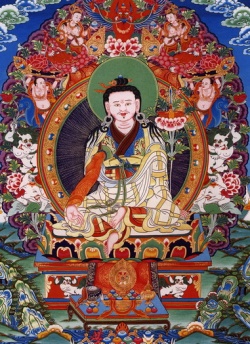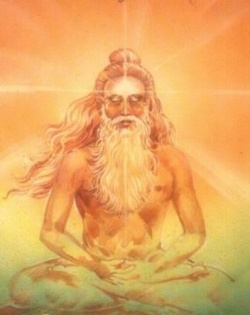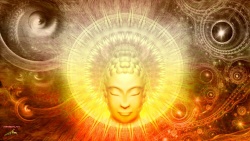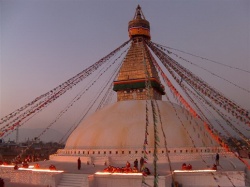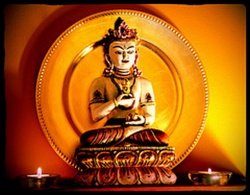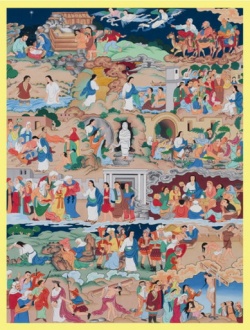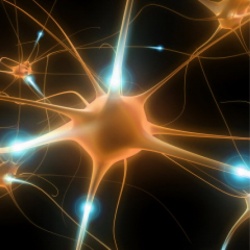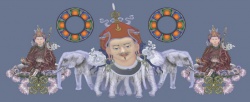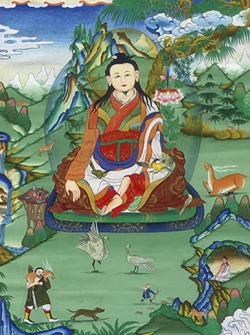Jigme Lingpa
- See also :
- See also :
Rigdzin Jigme Lingpa (1729–1798) was one of the most important tertöns of Tibet. He was the promulgator of the Longchen Nyingthik, the Heart Essence teachings of Longchenpa,
from whom, according to tradition, he received a vision in which the teachings were revealed.
The Longchen Nyingthik eventually became the most famous and widely practiced cycle of Dzogchen teachings.
Namkha'i and Shane (1999: p. 135) affirm that Jigme Lingpa wrote a treatise on the spiritual and medicinal usage of crystals and gems of principal importance. Jigme Lingpa (1730-1798):
Received the Longchen Nyingthik lineage as a mind terma from Lonchenpa.
His principal student was the first Dodrupchen.
Career
Prefiguring Jamgon Kongtrul Lodro Thaye's creation of the Five Collections, Jigme Lingpa gathered Nyingma texts that had become rare, starting with Nyingma tantras held in the manuscript collection of the Mindrolling Monastery.
This collection of the Nyingma tantras led to the amassing of the 'Collection of Nyingma Tantras',
the Nyingma Gyübum (Wylie: rNying-ma rgyud-'bum) for which Getse Mahapandita wrote the catalogue, proofread and arranged for its printing by soliciting the expensive and labour intensive project of carving the wood blocks for the block printing.
The wood block carving was forded through the patronage of the 'Derge' (Wylie: sDe-dge) Royal Family of Kham who favoured and honoured Jigme Lingpa.
Getse Mahapandita also arranged for the printing of texts by Jigme Lingpa and Longchenpa. Getse Mahapandita proof read these works of Jigme Lingpa, Longchenpa and the Nyingma Gyübum.
Jigme also wrote a nine-volume history of the Nyingma Vajrayana and other works. His non-sectarian presentation of Madhyamika (Middle Way view) follows Tsongkhapa's system.
A major precursor of the Rime (Tib. ris med) movement, Jigme Lingpa had many distinguished disciples in all four lineages.
The first Dodrupchen Rinpoche, Dodrupchen Jigme Trinle Ozer, became his main lineage-holder.
Among those held by tradition to be Jigme Lingpa's reincarnations are Do Khyentse Yeshe Dorje (mdo mkhyen brtse ye shes rdo rje) (his mind-emanation), Patrul Rinpoche (speech-emanation) and Jamyang Khyentse Wangpo (body-emanation).
In Bhutan his tradition is held by successive incarnation of Padtselling Trulku and Yongla Jigme Kuendrel.
Both First Padtselling Trulku Drupthob Namgyal Lhendup. (1718-1786) and Second Padtselling Trulku Jigme Tenpai Gyaltshen(1788-1850) were student of Jigme Lingpa.
Jigme Lingpa, rendered in English by Sam van Schaik, states how his learnings commenced and he mentions grammar, Samye Chimpu, vajra, Longchenpa:
- I began with the study of grammar, and whatever vajra topics I came across, such as the Conqueror’s scriptures and the treatises which clarify their intention, texts on conventional definitions and instructions on the true nature.
Although I seized on them with veneration, apart from a few good imprints which inspired me to study in the brightness of day and under lamplight, I had no opportunity to increase my knowledge in a relationship with a teacher, even for a single day.
Then in dPal-gyi bSam-yas mChims-phu, I met three times with the wisdom-body of Klong-chen-pa, and through being blessed with various auspicious symbols, my karmic connections were awakened from out of The Great Perfection.
Gyatso (1998: p. 140) in mentioning Kumararaja, Ganachakra, Gurkha war, beer and black magic states that:
- Jigme Lingpa's Nyingma affiliations led sometimes to his participation in the sort of tantric activities that have long been criticized by more conservative Buddhists.
He was himself ambivalent about some of these activities:...he regretted the black magic he performed during the Gurkha war.
Jigme Lingpa even admits that the ancient ordinance of Lha Lama Shiwa and Changchub , which famously censured the indulgences of Nyingma practitioners, might have been merited.
And yet he reports with a certain pleasure taking part in a drunken communal feast (gaṇacakra) or being given beer at the house of the Nyingma master Kumārarāja (1266-1343) and doing "a dance of bliss-emptiness integrated."
Terma
When explaining the transmission and reception of the 'treasures' (Tibetan: terma) of the 'The Words of the Omniscient One' (Wylie: kun mkhyen zhal lung) and 'The White Lotus' (Wylie: rgyab brten padma dkar po) Jigme Lingpa makes reference to an admixture of 'mindstream' (Wylie:
[b]rgyud), 'Absolute Truth' (Wylie: don) and 'adhishthana' (Wylie: byin rlabs) and van Schaik (2004: p. 45) has rendered the Tibetan in English as follows : "the blessing of the truth-continuum" (Wylie: don brgyud byin rlabs),
"the blessing of the continuum" (Wylie: rgyud byin gyi rlabs), and "the transmission-blessing of symbols and words" (Wylie: brda tshig gi byin brgyud).
Longchen Nyingthig
Jigme Lingpa was a reincarnation of two important masters, Vimalamitra and King Trisong Deutsen.
As the embodiment of these two figures, Tibet's two primary Dzogchen lineages were combined in him—the Vima Nyingthik and Khandro Nyingthik, both of which are contained in the Nyingthik Yabshi.
Hence, the Longchen Nyingthig terma cycle is considered a condensation of these profound teachings.
The texts that were revealed by Jigme Lingpa, in their present-day form, comprise three volumes, known as the Nyingthig Tsapod (Wylie:snying thig rtsa pod).
The numerous treatises, sadhanas and prayers it contains deal primarily with tantric practice, in particular the 'stages of Development' (Tibetan: kye-rim) and Dzogchen.
Jikmé Lingpa discovered the Longchen Nyingtik teachings as mind terma at the age of twenty-eight.
Tulku Thondup writes:
- In the evening of the twenty-fifth day of the tenth month of the Fire Ox year of the thirteenth Rabjung cycle (1757), Jikmé Lingpa went to bed with an unbearable devotion to Guru Rinpoche in his heart;
a stream of tears of sadness continuously wet his face because he was not in Guru Rinpoche’s presence, and unceasing words of prayers kept singing in his breath.
- He remained in the depths of that meditation experience of clear luminosity for a long time. While being absorbed in that luminous clarity, he experienced flying a long distance through the sky while riding a white lion.
He finally reached a circular path, which he thought to be the circumambulation path of Jarung Khashor, now known as Boudhanath Stupa, an important Buddhist monument of giant structure in Nepal.
In this vision, the wisdom dakinis gave Jikmé Lingpa a casket containing five yellow scrolls and seven crystal beads.
One of the scrolls contained the prophetic guide of Longchen Nyingtik, called Nechang Thukkyi Drombu.
At the instruction of a dakini, he ate the yellow scrolls and crystal beads, and all the words and meaning of the Longchen Nyingtik terma were awakened in his mind.
Jikmé Lingpa kept this terma secret for years, and he did not even transcribe the terma until he entered another retreat in which he had a series of visions of Longchen Rabjam.
Tulku Thondup explains:
- In the earth-hare year (1759) he started another three-year retreat, at Chimpu near Samye monastery.
During that retreat, because he was inspired by three successive pure visions of Longchen Rabjam, and he was urged by repeated requests of dakinis, he transcribed his terma as the cycle of Longchen Nyingtik.
On the tenth day of the sixth month (monkey month) of the monkey year (1764) he made his terma public for the first time by conferring the transmission of empowerment and the instructions upon fifteen disciples.
Sadhanas
Chöd
The Loud Laugh of the Dakini (Tibetan: mkha' 'gro'i gad rgyangs) is a Chöd sadhana from the Longchen Nyingthig cycle of terma teachings revealed by Jigme Lingpa.
